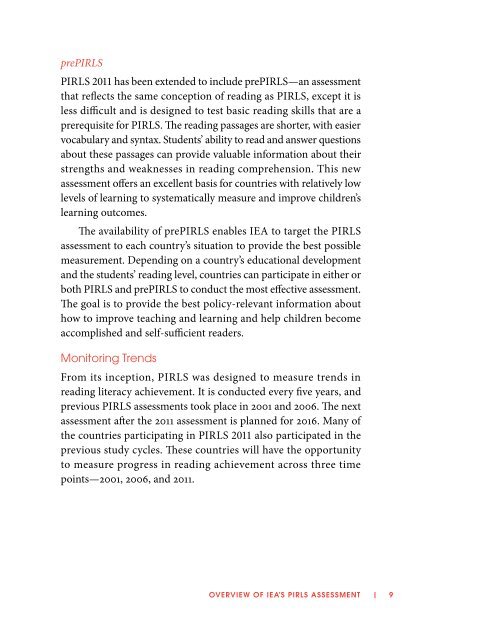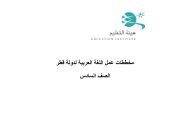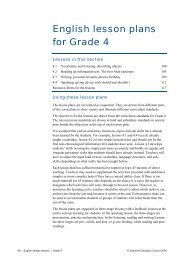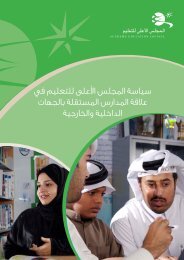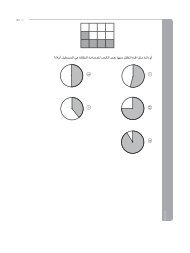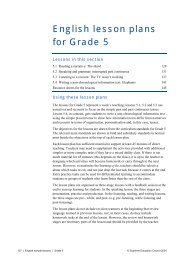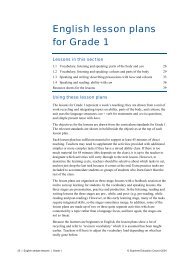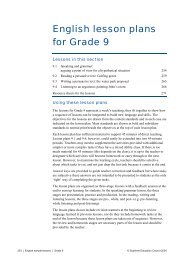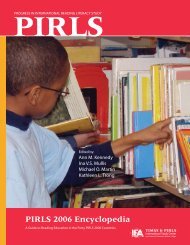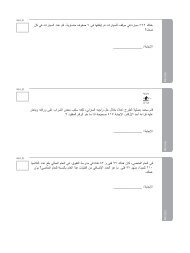PIRLS 2011 Assessment Framework - Proj AVI
PIRLS 2011 Assessment Framework - Proj AVI
PIRLS 2011 Assessment Framework - Proj AVI
- No tags were found...
Create successful ePaper yourself
Turn your PDF publications into a flip-book with our unique Google optimized e-Paper software.
pre<strong>PIRLS</strong><strong>PIRLS</strong> <strong>2011</strong> has been extended to include pre<strong>PIRLS</strong>—an assessmentthat reflects the same conception of reading as <strong>PIRLS</strong>, except it isless difficult and is designed to test basic reading skills that are aprerequisite for <strong>PIRLS</strong>. The reading passages are shorter, with easiervocabulary and syntax. Students’ ability to read and answer questionsabout these passages can provide valuable information about theirstrengths and weaknesses in reading comprehension. This newassessment offers an excellent basis for countries with relatively lowlevels of learning to systematically measure and improve children’slearning outcomes.The availability of pre<strong>PIRLS</strong> enables IEA to target the <strong>PIRLS</strong>assessment to each country’s situation to provide the best possiblemeasurement. Depending on a country’s educational developmentand the students’ reading level, countries can participate in either orboth <strong>PIRLS</strong> and pre<strong>PIRLS</strong> to conduct the most effective assessment.The goal is to provide the best policy-relevant information abouthow to improve teaching and learning and help children becomeaccomplished and self-sufficient readers.Monitoring TrendsFrom its inception, <strong>PIRLS</strong> was designed to measure trends inreading literacy achievement. It is conducted every five years, andprevious <strong>PIRLS</strong> assessments took place in 2001 and 2006. The nextassessment after the <strong>2011</strong> assessment is planned for 2016. Many ofthe countries participating in <strong>PIRLS</strong> <strong>2011</strong> also participated in theprevious study cycles. These countries will have the opportunityto measure progress in reading achievement across three timepoints—2001, 2006, and <strong>2011</strong>.overview of IEA’s <strong>PIRLS</strong> <strong>Assessment</strong> | 9


